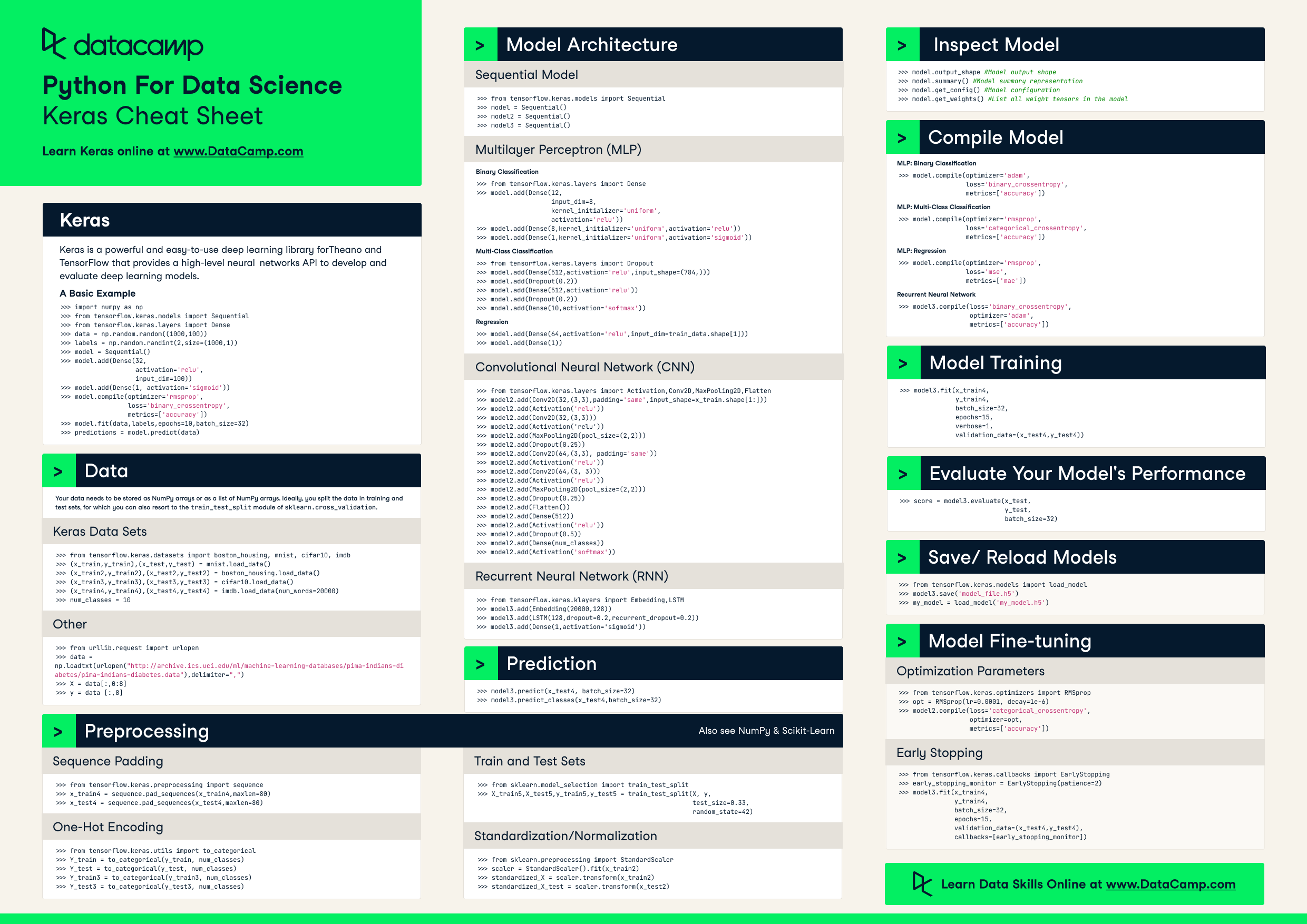Keras Cheat Sheet: Neural Networks in Python
Make your own neural networks with this Keras cheat sheet to deep learning in Python for beginners, with code samples.
jun 2021 · 5 min leer
RelacionadoSee MoreSee More
hoja de referencia
Scikit-Learn Cheat Sheet: Python Machine Learning
A handy scikit-learn cheat sheet to machine learning with Python, including some code examples.
Karlijn Willems
4 min
hoja de referencia
Deep Learning with PyTorch Cheat Sheet
Learn everything you need to know about PyTorch in this convenient cheat sheet
Richie Cotton
6 min
hoja de referencia
Python for Data Science - A Cheat Sheet for Beginners
This handy one-page reference presents the Python basics that you need to do data science
Karlijn Willems
4 min
tutorial
Keras Tutorial: Deep Learning in Python
This Keras tutorial introduces you to deep learning in Python: learn to preprocess your data, model, evaluate and optimize neural networks.
Karlijn Willems
43 min
tutorial
Convolutional Neural Networks in Python with Keras
In this tutorial, you’ll learn how to implement Convolutional Neural Networks (CNNs) in Python with Keras, and how to overcome overfitting with dropout.
Aditya Sharma
30 min
tutorial
Python For Data Science - A Cheat Sheet For Beginners
This handy one-page reference presents the Python basics that you need to do data science
Karlijn Willems
7 min
